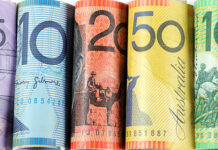Currency markets remain in a holding pattern
Currency markets have, thankfully, declined to participate in the daily stimulus mood swings prevalent in equity markets now. The net effect though, is that the wait-and-see approach has squashed volatility, leaving currency markets in a range trading holding pattern. Until a stimulus deal is done, or the US presidential debate arrives, that status quo is likely to remain the week’s theme.
The US dollar index eased 0.32% overnight to 94.42, almost exactly in the middle of the index’s broader 93.00 to 94.00 range. That left the EUR/USD and GBP/USD practically unchanged at 1.1775 and 1.2940 respectively. Amongst the rest of the majors, the story was much the same. The technical picture continues to suggest that the major currencies could suffer at the hands of the US dollar over the next couple of weeks. Such a downward correction would be in keeping with risk-hedging flows into the US dollar ahead of the US election, and the complacency surrounding both Brexit trade negotiations and Covid-19 in the United Kingdom and Europe.
In Asia, both the onshore and offshore Chinese yuan’s continue to grind higher versus the dollar, supported by Chinese economic data and China’s interest rate differential. A situation highlighted by the unchanged Chinese Loan Prime Rates this morning. That has anchored regional Asian currencies as well, with their high beta to China. I continue to expect regional Asia, ex Indonesia, to outperform versus G-10 currencies.
The final US presidential debate has been confirmed for 0900 SGT on Friday morning. The debate will provide a welcome distraction to the street’s US fiscal stimulus negotiations. Whatever the outcome of these talks, there will probably be a profit-taking sell-off or a deal failure sell-off in equity markets, in particular. This should translate into gains for the US dollar.












